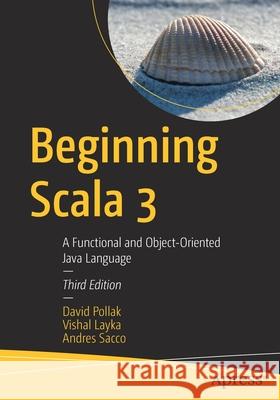Beginning Scala 3: A Functional and Object-Oriented Java Language » książka
topmenu
Beginning Scala 3: A Functional and Object-Oriented Java Language
ISBN-13: 9781484274217 / Angielski / Miękka / 2022 / 344 str.
Kategorie:
Kategorie BISAC:
Wydawca:
APress
Język:
Angielski
ISBN-13:
9781484274217
Rok wydania:
2022
Ilość stron:
344
Waga:
0.59 kg
Wymiary:
25.4 x 17.78 x 1.83
Oprawa:
Miękka
Wolumenów:
01
Dodatkowe informacje:
Wydanie ilustrowane











